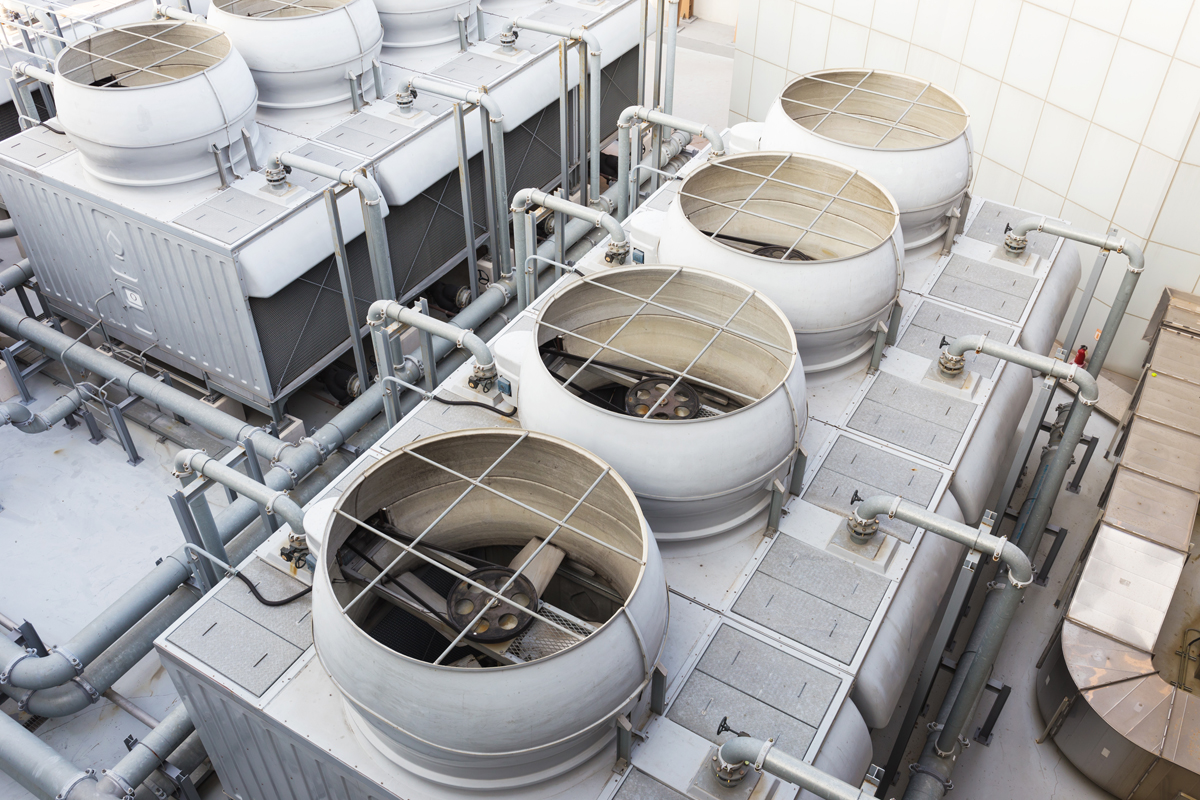Forced draft cooling towers are a specific type of mechanical draft cooling tower that use fans at the air intake (bottom or side) to force air through the system. They’re commonly used in industrial, HVAC, and power plant applications where space and controlled airflow are critical.
🌀 What Is a Forced Draft Cooling Tower?
In a forced draft cooling tower, air is pushed (forced) into the tower by one or more fans located at the base. The air then moves up through the fill media, interacting with hot water descending from above, which causes evaporative cooling. The cooled water collects at the bottom and is recirculated.
⚙️ How It Works
-
Hot water enters the top of the tower and is distributed over fill media.
-
Fans at the air intake (bottom/side) force ambient air into the tower.
-
Air rises through the fill and contacts falling water.
-
Evaporation removes heat from the water.
-
Cooled water collects in the basin for reuse.
-
Air exits through the top (natural draft or vented outlet).
✅ Advantages of Forced Draft Cooling Towers
| Benefit | Description |
|---|---|
| 🔧 Tighter Airflow Control | Air is pushed in under pressure, allowing for consistent cooling regardless of wind direction. |
| 🏗️ Compact Design | Typically smaller and can be installed in tighter spaces than induced draft towers. |
| 🌡️ High Efficiency | Efficient in high-static pressure applications where airflow resistance is greater. |
| 💨 No Air Recirculation | Since fans are at the intake, exhaust air is less likely to be drawn back in. |
| 📏 Low Height Profile | Ideal for installations with vertical height restrictions. |
⚠️ Disadvantages
| Drawback | Description |
|---|---|
| ⚡ Higher Energy Use | Fans must overcome more resistance, so motors may draw more power. |
| 🔊 Noise at Ground Level | Fans located low can generate more audible noise nearby. |
| 🧼 More Frequent Maintenance | Fans are exposed to moist air and require regular upkeep. |
| 🧱 More Susceptible to Air Inlet Fouling | Ground-level air intake increases exposure to debris, dust, or vegetation. |
🔍 Common Applications
-
Industrial processes (plastics, steel, chemicals)
-
HVAC systems for commercial buildings
-
Power generation (small to medium systems)
-
Data centers with high heat load but space limitations
🔄 Forced vs. Induced Draft Cooling Towers
| Feature | Forced Draft | Induced Draft |
|---|---|---|
| Fan Location | At the bottom/sides | At the top (discharge) |
| Air Movement | Air is pushed in | Air is pulled through |
| Noise Location | Near ground level | At the top of the tower |
| Efficiency | High in compact setups | Generally more efficient for large-scale cooling |
| Cost | Often less expensive initially | Slightly higher initial cost but lower energy use over time |
Universal Tower Parts In Phoenix, AZ
Universal Tower Parts provides stainless steel and galvanized options, welded and gasketed, direct, gear reducer and belt drive units, with efficient Jedair fans, and Jedair low noise fans. Strainers, fan guards and louvers are well constructed, and designed to operate efficiently as they perform their function. Cool Core drift eliminators and fill are made by Universal Tower Parts expressly for our towers.
[/vc_column_text][/vc_column][/vc_row]








